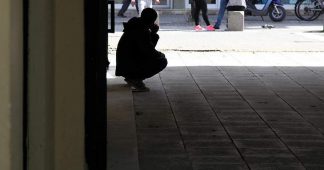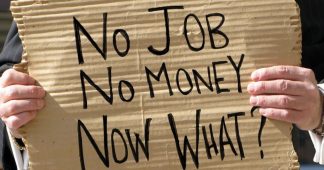Tyler Durden
Sep 25, 2017
Economic prosperity is concentrated in America’s elite zip codes, but in an interesting report on Distressed Communities, from The Economic Innovation Group, it is increasingly clear that economic stability outside of those communities is rapidly deteriorating.
As Axios noted, this isn’t a Republican or Democratic problem. At every level of government, both parties represent distressed areas. But the economic fortunes of the haves and have-nots have only helped to widen the political chasm between them, and it has yet to be addressed by substantial policy proposals on either side of the aisle.
Economic Prosperity Quintiles
 As MishTalk.com’s Mike Shedlock writes below, the study notes:
As MishTalk.com’s Mike Shedlock writes below, the study notes:
“America’s elite zip codes are home to a spectacular degree of growth and prosperity. However, millions of Americans are stuck in places where what little economic stability exists is quickly eroding beneath their feet.”
Distress is based on an evaluation of seven metrics.
- No high school diploma
- Housing vacancy rate
- Adults not working
- Poverty rate
- Median income ratio
- Change in employment
- Change in business establishments
Change in Distress Quintiles
Percent Living in Distressed Areas
Performance Averages
Population Statistics
Key Findings
- Over half the population in distressed communities are minorities, compared to only about a quarter of the population in prosperous ones.
- Asians and whites are more likely to live in a prosperous zip code than any other type of community.
- Blacks and Native Americans are more likely to live in a distressed zip code than any other type of community, while Hispanics are most likely to reside in an at risk one.
- Blacks and Native Americans are three times more likely to live in a distressed community than a prosperous one.
- Majority-minority zip codes are two times more likely to be distressed than the average zip code.
Political Distribution
- Republicans dominate at the very top of the distribution, representing nine of the 10 most prosperous congressional districts in the country. Most of these are suburban enclaves around fast-growing metropolitan areas, for example on the outskirts of Dallas, Denver, Houston, Minneapolis, Phoenix, and Washington, DC. Expanding to the entire top quintile, Republicans represent 63 percent of the country’s prosperous districts compared to Democrats’ 37 percent.
- Conversely, six of the country’s 10 most distressed congressional districts are represented by Democrats. Eight of the 10 are located in the South, with Ohio’s 11th (Cleveland) and Arizona’s 7th (Phoenix) as the two exceptions.
Report Conclusion
“It is fair to wonder whether a recovery that excludes tens of millions of Americans and thousands of communities deserves to be called a recovery at all.”
















